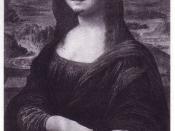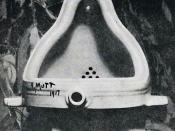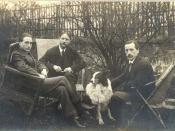Dada was a movement in art, literature, music, performance and film that was invoked by the advent of World War I. Switzerland, a neutral country, became the refuge of many who objected to the war. In Zurich, 1916, Dada emerged distinctly as an active refusal of and attempt to subvert the prevailing values of the bourgeois society that supported and protected itself with the war. Dada sought to refuse these values in every guise they took, to disrupt them with its violence and rhetoric, to destroy and heal simultaneously. Language was targeted through poetry, periodicals and manifestos, because it was being used to present the unjust as just, illogic as logic. Logic itself was denounced in the contradictory statements and actions of Dadaists, because logic turned young men to cannon fodder. So chance, the logic of nature, was granted equal importance to the cerebral process and played an important role in many manifestations of Dada.
Considered a culture's finest and most distilled product, art was to Dada the greatest illustration and support of the social sickness. Art became the bull's eye over the bourgeois heart and anti-art, a term said to be coined by Marcel Duchamp in 1914, was the weapon. By disrupting artistic and cultural convention, Dadaists hoped to disrupt the values that had brought about and supported the continuation of the war.
Though Zurich was the birthplace of Dada, New York also became a harbor for European artists seeking shelter from the war. Arriving in New York in 1915, the French artist Marcel Duchamp met Francis Picabia and Man Ray. By 1915 the three men had created a whirlwind of anti-art activities around themselves. Though they never labelled themselves Dada, their motivations paralleled their Zurich counterparts. As Richter recalled, Dada activities in New York "were different, but its...


